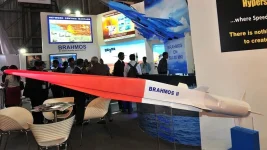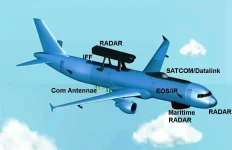- Views: 1K
- Replies: 9
India is significantly bolstering its naval capabilities with the approval to construct two indigenously designed nuclear-powered attack submarines (SSNs) at a new submarine facility in Visakhapatnam.
This project marks a major step forward in India's long-term vision to strengthen its underwater fleet and enhance its maritime power projection. Construction is set to commence by the end of 2029, with the steel-cutting process marking the official start.
While the initiation of construction is a crucial milestone, the journey to operational deployment will be a lengthy one. The SSN program is estimated to require at least seven years before the first submarine is ready for harbor and sea trials, pushing the timeline to around 2035.
Following the initial rollout, another four to five years will be needed for the submarine to complete all necessary trials, including extensive weapons testing, before it can be inducted into the Indian Navy. This means the first indigenous SSN is unlikely to enter service before 2036.
These new SSNs will incorporate cutting-edge technology, much of which is being developed for the first time by Indian defence scientists. A major technological advancement in this program is the introduction of a new 190 MWe Pressurized Water Reactor (PWR) to power the submarines, significantly enhancing their endurance and operational capabilities.
The development of these submarines represents a significant leap forward in India's nuclear submarine program, which has primarily focused on the Arihant-class ballistic missile submarines (SSBNs). Unlike SSBNs, designed for nuclear deterrence, SSNs are built for offensive operations, specializing in hunting enemy submarines and surface ships, conducting surveillance, and ensuring dominance in critical maritime zones.
Given the complexity of the SSN program, challenges are expected, particularly during the testing and validation phases. Like the Arihant-class SSBN program, which underwent years of rigorous testing, the SSN program will involve extensive trials to ensure all systems, including propulsion, stealth capabilities, and weapons integration, function flawlessly.
These submarines will undergo multiple phases of sea trials, including tests of their sonar systems, torpedoes, and cruise missile launch platforms. The trials will also evaluate the endurance of the new 190 MWe reactor under various operational conditions. Each phase will validate different elements of the submarine's design and capabilities, contributing to the extended timeline towards induction.
Despite the long and complex timeline, the SSN program marks a crucial advancement in India's naval capabilities. Post-2035, the Indian Navy will possess some of the most advanced nuclear-powered attack submarines in the region, specifically designed to meet the unique strategic requirements of the Indian Ocean Region. This development will significantly enhance India's ability to protect its maritime interests and project power in the Indo-Pacific.




